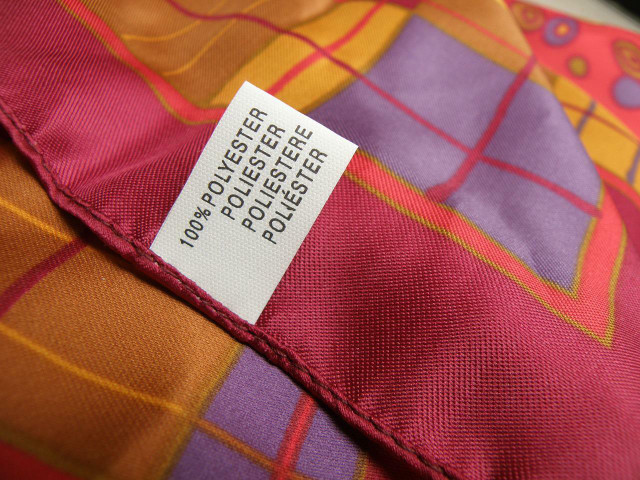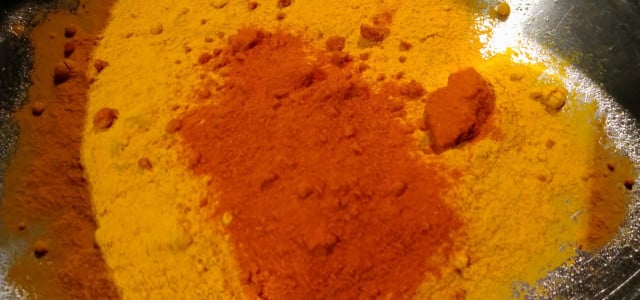Tie-dying is a fun project that can give old garments a new lease of life. However, there are a few reasons why you might not want to tie-dye polyester clothing.
Can you tie-dye polyester? Technically. Polyester is a man-made fabric created from a byproduct of petroleum. Because polyester is not a natural fiber, it cannot absorb regular water-soluble dyes. Polyester dyed for commercial use is submerged in vats of heated chemicals (like sulpho ricinoleic acid) or sprayed with jet-dying machines to fuse colorant to the fibers. This process often takes place before the fibers are woven into a fabric, which is why polyester never bleeds its color or fades — even after years of use.
To replicate this process, you need to purchase a special dye for synthetic fabrics called disperse dye. This dye is non-ionic, meaning its atoms are held together through chemical bonding. Polyester must be completely submerged to take hold of the color, so it isn’t possible to spray colorant onto the fabric. That makes the fun patterns associated with tie-dying difficult or impossible to achieve.
Furthermore, unlike other dyes, dispersed dye doesn’t work in room-temperature water. It needs extremely high heat, at least 200 °F, to bond to polyester fibers. The requirement for high heat means you’ll need to boil your tie-dye creation on the stove before seeing any color absorption. So, the project is less than ideal in the summer heat and wastes unnecessary energy. You also run the risk of ruining your garment. Furthermore, if what you want to dye contains elastic or spandex, prolonged exposure to high heat can cause the elasticity to degrade.
You must also add a dye carrier or color intensifier to help the color soak into the polyester. This substance can release a noxious odor and make the finished fabric stiff to the touch.
So — can you tie-dye polyester? Yes, but you may not want to.
Using Dye on Poly-Blends

To use regular tie-dyes, you have to use them on a polyester blend to see the colors. As a rule of thumb, the higher the percentage of polyester in your fabric, the more pastel-colored and uneven your dye will appear. Either way, you won’t achieve as vibrant or consistent a color as you would with 100% cotton or linen. You can tie-dye polyester and poly-blends, but it’ll be much more work.
Can You Tie-Dye Polyester? There Are Better Alternatives
If you really want to upcycle your old polyester clothes, there is no shortage of creative ideas available online. You can tie-dye polyester, but you don’t have to! In addition to our guide on what to do with old clothes, here are some quick and easy options:
- Make worn-out t-shirts into shopping bags
- Rip up old and threadbare items and give them a second life as cleaning rags
- Use old fleeces to sew a quilt or a pet bed
- Cut used fabric into strips to make headbands and hair elastics
- Braid strips together to make dog toys
You can also donate your old clothes if you just want them out of your sight. However, never throw out polyester clothes. Since they are 100% non-biodegradable, they will continue to release microplastics into the environment for years.
Read more:
- Natural Dyeing: How to Use Natural Dyes for Fabric
- 12 Vegan Clothing Brands That Are Also Eco-Friendly
- What is Modal Fabric and Is It Really Sustainable?
Do you like this post?







